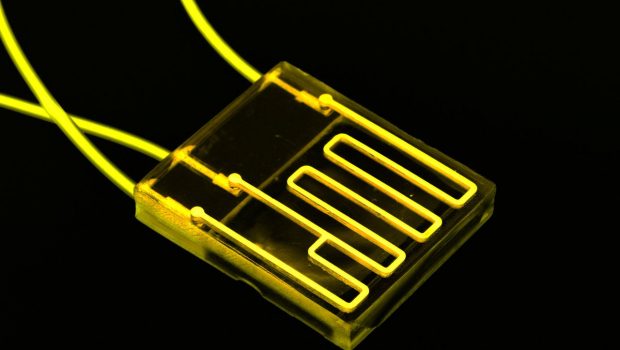Last month, at Formnext 2022 in Frankfurt, Germany, Horizon Microtechnologies commercially launched its template-based 3D microfabrication technology, which produces conductive micro additive manufacturing derived parts with micrometre-scale precision.
Demonstrating its technology alongside fellow micro-AM technology innovator Boston Micro Fabrication (BMF), Horizon CEO Andreas Frölich showed attendees the company’s post-build processes, which introduce the versatility of micro-AM to such applications as electrodes and electrical contact pins, ESD safe parts, 3D microfluidics, and MEMS and optics packaging.
Frölich said: “Template-based 3D microfabrication is effectively a mechanism to exploit the usefulness of polymer micro-AM produced 3D microstructures for hitherto unserved areas of industry by adding material and functionality to the microstructure, typically with a coating process. This is a real game changer for industry. The key enabling technology for our processes is micro-AM, and today a number of commercially viable polymer-based micro-AM platforms exist that can achieve exacting tolerances, quickly, cost effectively, and above all repeatably.”
Horizon specialises in the production of micro-scale conductive parts and environmentally resistant parts. Once a Horizon part is produced on a polymer-AM platform, it is either wholly or selectively coated with a conductive layer.
Horizon says that is technology can coat difficult areas homogenously such as long narrow channel and undercuts. The company states electrodes, electrical sensor heads, and ESD-safe components.
Speaking further about the company’s technology, Frölich added: “These platforms are almost exclusively restricted to the production of parts in resin or plastics. Horizon Microtechnologies bridges the gap between micro-AM and parts with enhanced functionality through the use of proprietary post-build processes. This means that companies requiring the flexibility, innovation and agility that is driven by AM for parts with conductive, ceramic, heat-resistant, or other polymer-incompatible functionalities now have a commercially viable solution available.”
In the realm of ESD-safe parts, Horizon can make parts with a controllably conductive surface coating and coat internal channels with multiple bends. The company says this allows it to make compact and high-performance end-effectors for vacuum pick-and-place devices which are at the same time conductive enough to prevent ESD-discharge.
According to Horizon, its additive manufacturing approach lends itself well to the area of microfluidics, as it is suited to prototyping and small batch production of complex, multi-level microfluidic chips, including chips with integrated filters and interfaces to external components.
Horizon claims that while additive manufacturing is ‘not typically considered’ a mass-production technology, the reduction in the size of electronics and optics, and the accompanying shrinkage of packaging, has made it a viable production alternative for MEMS and optics housings for small to medium batch sizes.
Frölich added: “These are exciting times for us all at Horizon as years of R&D have now culminated in us launching our technologies commercially. I think what makes us stand out as a company is our in-depth experience with production and design techniques in the 3D microfabrication ecosystem. We work in a supplier-independent fashion with polymer micro-AM technology innovators and have developed in-house post-build technological solutions that are an integral and important addition to the AM process chain, stimulating innovation and disrupting the manufacture of micro-scale conductive parts and components.”
Horizon's 3D microfabrication offering is the latest technology to be introduced for the development of micro-scale components. Last month, TCT spoke to BMF CEO John Kawola at Formnext 2022 about the company's new system, the microArch S350, which is the latest addition to its range of microscale 3D printers.
Want to discuss? Join the conversation on the TCT Additive Manufacturing Network.
Get your FREE print subscription to TCT Magazine.








Gloss